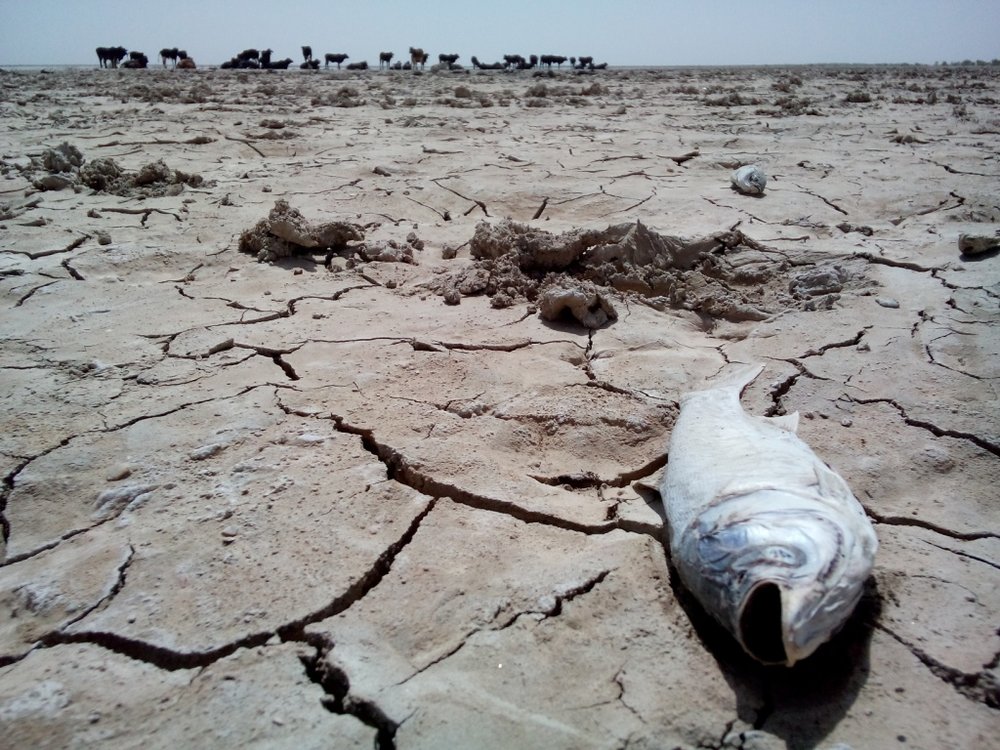Iran, Afghanistan agree on transboundary waters, says ambassador

TEHRAN — Iran and Afghanistan have reached an agreement on water right of Heray Rud River, Hamoun wetland and Helmand River, Afghanistan's Ambassador to Iran Nasir Ahmad Nour has said./
The Hamouns are transboundary wetlands on the Iran-Afghan border made up of three lakes: Hamoun-e Helmand, which is entirely in Iran, Hamoun-e Sabari on the border, and Hamoun-e Puzak, almost entirely inside Afghanistan. The three lakes are linked and fed by water from the Helmand River which starts in the Hindu Kush Mountains in Afghanistan.
Heray Rud River originates in the Baba mountain range, part of the Hindu Kush system, and follows a relatively straight course to the west. After Herat, the river turns northwest, then north, forming the northern part of the border between Afghanistan and Iran. Farther north it forms the south-eastern part of the border between Iran and Turkmenistan. The Iran–Turkmenistan Friendship Dam is on the river.
Transboundary waters – the aquifers, and lake and river basins shared by two or more countries – support the lives and livelihoods of great numbers of people across the world. In an era of increasing water stress, how to manage these critical resources is vital to promoting peaceful cooperation and sustainable development.
According to UN Water depleted and degraded transboundary water supplies have the potential to result in social unrest and spark conflict within and between countries. To deal with the negative impacts of climate change combined with the demands of increasing populations and economic growth requires a supranational, integrated approach to transboundary water resource management based on legal and institutional frameworks and shared benefits and costs.
Unfortunately climate change and low precipitation levels, coupled with dam construction and not providing the downstream with their water rights have caused dryness in northeastern, eastern, and southeastern parts of Iran which have sparked protests between the two countries.
“Water committees established between Iran and Afghanistan have led talks about Helmand and Hamoun and decided to fully investigate the reasons as to why the lake and the river are dried, and then after deciding the reasons they will jointly collaborate on restoring them,” the ambassador said, ISNA reported on Wednesday.
“The issue of Heray Rud will be also tackled in the next step,” he added.
Inquired about the details of the cooperation between Iran and Afghanistan to address the wetland and rivers’ dryness the ambassador refused to provide more information, however, he explained that both countries have reached bilateral agreements.
“Unfortunately the whole region is facing unprecedented drought and many areas in Afghanistan have experienced sharp drops in precipitation levels by some 60 percent which has urged many to migrate, these are all stemmed from climate change and long-term drought spells,” Ahmad Nour regretted.
He further highlighted that the fact that medias criticize Afghanistan for not providing Hamoun wetland with its water right is unfounded and the main reasons behind Houman drainage is dramatic decrease in precipitation amounts, temperature rise, climate change and increased use of water.
When droughts occur in Afghanistan, or the water in watersheds that support Hamoun is drawn down by other natural or human-induced reasons, the end result is a dry lake bed in Iran. In addition, when the lake is dry, seasonal winds blow fine sands off the exposed lake bed and give rise to crippling sand and dust storm in eastern and southeastern parts of Iran.
The sand is swirled into huge dunes that may cover a hundred or more fishing villages along the former lake shore. Wildlife around the lake is negatively impacted and fisheries are brought to a halt.
In an exclusive interview with the Tehran Times published in October 2017, Afghanistan's Ambassador to Iran Nasir Ahmad Nour explained that Afghanistan has always adhered to the agreements stating the water right of the two countries. The ambassador also stated that all these times the water have been flowing into Iran and the fact that Hamoun is still dry has nothing to do with Afghanistan and Iran must look into the problem and find the reasons for the lake dryness inside the country.
MQ/MG
Leave a Comment